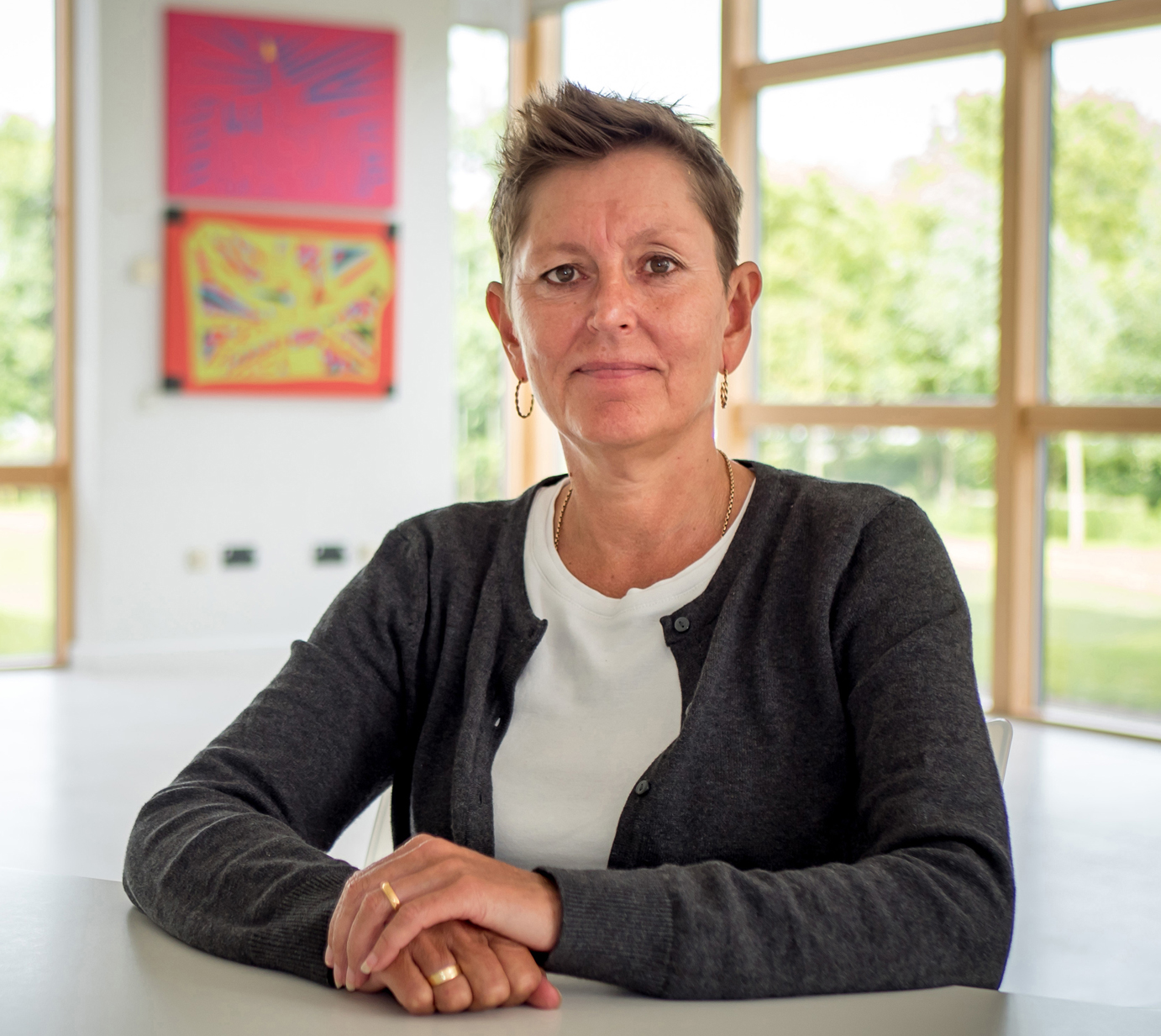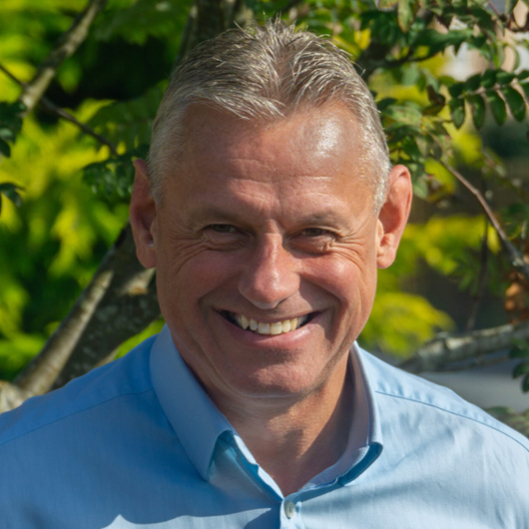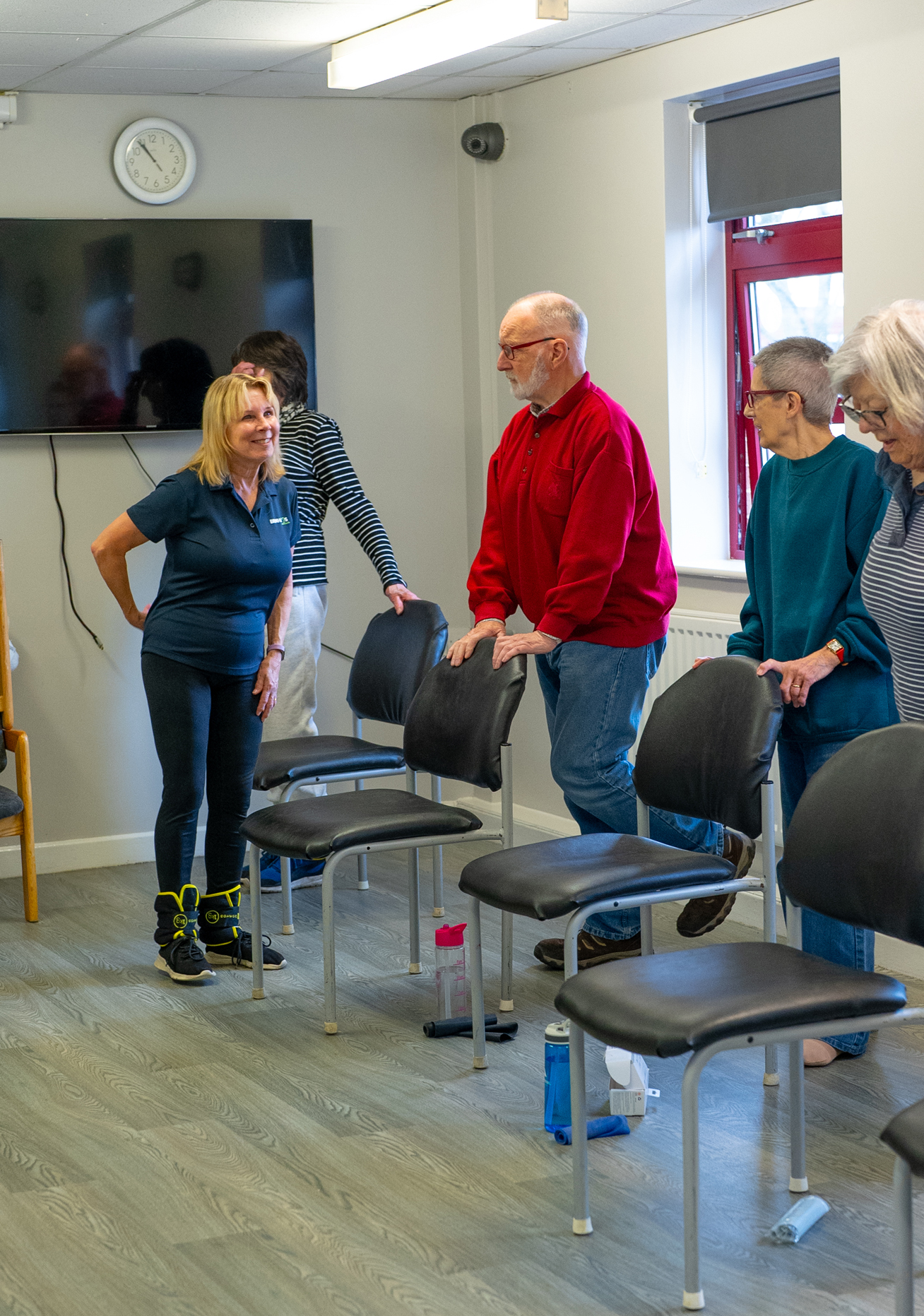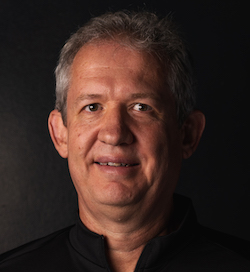features
Debate: Pivot to wellbeing
Although there’s much talk about working with health services, research from SLC suggests there’s much work to do before the sector is ready for the challenge. Kath Hudson asks the experts to identify barriers and solutions


The lack of the right skills in the sector could derail the whole active wellbeing movement just as it starts to build momentum.
SLC has been supporting numerous local authorities in pivoting their leisure services into an active wellbeing service – a more integrated health, social care and wellbeing offer. This aligns with Sport England’s The Future of Public Sector Leisure strategy, which has been adopted by a number of progressive local authorities that have recognised that leisure, in its current format, is unsustainable and not sufficiently benefitting those communities who experience the greatest health inequalities.
Leisure services need to evolve into an active wellbeing offer, which will be part of a system-wide approach, focusing on improving the health of people who are inactive, less active or living with long term conditions, in addition to meeting the wider universal needs of residents.
This would entail the use of a different service delivery model: adapted facilities and universal services proportionately supporting different groups and providing preventative support and interventions linked to supporting behaviour change and communities taking greater responsibility for their wellbeing.
While the partnerships, funding and facilities to support active wellbeing can be brought together, our research at SLC has identified the biggest challenge currently is the skills level in the leisure workforce for the following reasons:
Existing professional standards make little reference to working with people who are inactive, less active or have long-term conditions. This is partly because health and social care commissioners weren’t involved in the development of those professional standards. As a result, qualifications and CPD courses have very little content relating to working with people in poor health or with inactive lifestyles.
There’s also a big cultural gap between leisure professionals and health and social care professionals, which results in different languages, working styles and expectations. This makes joined-up working more difficult.
The current system for creating appropriate pathways and qualifications is underdeveloped and not sufficiently aligned to the health and social care sector’s requirements.
Having shared a white paper highlighting these issues with sector organisations, representative bodies and leaders, the overall conclusion SLC has come to is that the leisure workforce isn’t ready to deliver active wellbeing. If we are to become a key preventative health and social care partner, we need to raise awareness of the issues that need to be tackled.

The issue really isn’t about the workforce being ready – as a sector we’re already partnering with allied professionals in the health and social care sector – the challenge is that policy hasn’t kept pace with societal needs, which is why we haven’t seen the collaboration that’s needed between the two sectors happen at scale.
We need greater government buy-in and resourcing for social prescribing and prevention activity to address the high-levels of long-term ill-health in the UK, as well as collaboration across government departments which, in its simplest form, acknowledges and leverages the benefits of regular physical activity and exercise in reducing the burden on the health service.
There are two significant challenges holding the sector back from having the impact we need at scale in relation to delivering active wellbeing. The first is recruitment and retention. The CIMSPA Workforce Insights Report 2023, shows that although advertised salaries in our sector have grown closer to the average of all occupations, they remain lower, which makes it difficult for our sector to attract and retain talent.
At a time when our economy is seeing a tight labour market, it has become even more challenging to attract talent in competition with other sectors.
Our data shows there are significant skills shortages in the sector for in-demand roles such as lifeguard, sports coaches and swimming instructors, as well as shortages of staff with skills in managing safeguarding, mental wellbeing, long-term health conditions and equalities and diversity.
While we can support those already working in the sector to develop these skills, it will continue to be challenging to retain them – and attract new entrants with skills and experience in these areas – if we don’t incentivise people to work in our sector.
The second challenge is the lack of systemic joined-up thinking at policy-making level. We need a genuine partnership between the sector and the Office for Health Improvement and Disparities (OHID) so commissioning of physical activity at a local level is enabled at scale to reduce the burden on local health diagnosis and treatment services.
The work we’re delivering at CIMSPA, through our local delivery team and the establishment of Local Skills Accountability Boards, is already demonstrating the value of this type of approach. We’re bringing together employers, Active Partnerships, health commissioners and education and skills development providers, to identify what’s needed locally.
This connection is vital and is the conduit for conversations that enable the right provision to be developed to serve the local need. The challenge is to scale these partnerships so they can deliver at pace and that’s where the need for leadership from policy makers is imperative to ensure that what’s delivered is available to the widest possible proportion of the population.
Through CIMSPA’s work in places such as Leicestershire, Devon and Suffolk we can see how a joined-up approach, with our sector working hand in hand with health professionals, skills development and education providers and employers is leading to great opportunities for participation, particularly within communities and demographics that are typically difficult to reach or engage. These opportunities are resulting in more activity, which in turn is improving health and wellbeing, meaning less pressure on NHS services.
However, until we see a joined-up approach across government with the Department of Culture, Media and Sport (DCMS) working alongside DHSC, DoE, DBEIS, DLUC, and most importantly, the Treasury, to seriously drive the benefits of activity for good health across the population, I worry we’re only going to be able to talk about the benefits as small-scale initiatives.
The good news is that alongside our partners on the National Sector Partners Group* we’re engaging with the government and the opposition to show the great work across the sector. We’re providing a huge amount of evidence about how physical activity is improving lives, reducing demand on the health service and having positive economic impacts across communities.
*Active Partnerships, CIMSPA, Sport for Development Coalition, Sport and Recreation Alliance, UK Active, Youth Sport Trust


Overall, the ingredients are there to work collaboratively with the health care sector: shared purpose, great examples of good practice to learn from, vast knowledge and training to support ongoing workforce development. As an industry, our primary purpose should be to eradicate inactivity and drive physical activity in all sectors of the population, without over-reaching our remit and causing confusion with potential partners.
At Parkwood we’re investing heavily in ensuring we have genuine experts leading our development. We now have in-house clinical, nutrition and wellbeing expertise and more than 230 of our colleagues have been upskilled in delivering a range of health-related interventions across MSK conditions, cancer rehabilitation, mental health and disability.
Our MSK Hubs project has so far generated an estimated £400,000 in social value and with 28 hubs across our facilities, we’ve been able to achieve more than 1,700 new referrals.
As well as offering clinical support, we added social coffee mornings, thereby making the intervention about engaging the community, not just tackling the conditions.
However, barriers exist at both an individual and systemic level and we must address both if we are to continue delivering sustainable change. Often active wellbeing initiatives exist in silos, which can lead to a duplication of effort, missed opportunities and difficulty in achieving sustainable impact. Policy and funding limitations, as well as data and evidence gaps, present further causes for concern. Individually, developing cultural competency is key – this is crucial for community engagement and ownership and something that requires greater recognition and focus in workforce recruitment and development.
The system changes needed can be broadly split into four areas:
We need to improve recruitment, development and support and to better equip leisure professionals with skills in behaviour change, health promotion, community engagement, working with diverse populations, as well as the technical skills required for safe activity delivery.
We need more cross-sector collaboration through joint training initiatives, knowledge-sharing platforms and secondment programmes, as creating clear career progression paths within the active wellbeing field will enable us to recruit a more diverse workforce, with greater lived experience that resonates with our customers.
This continues to be a considerable challenge – tackling inactivity should be seen as a generational challenge that requires long-term planning and funding. To accompany this long-term planning, our sector needs to invest in research and evaluation and then allocate resources based on evidence-based decisions. Our experience at Parkwood has shown this helps to identify sustainable best practice and to adapt programmes for maximum impact.
If we are to create long-term behaviour change, active wellbeing must be integrated into key policy frameworks, especially health, social care, and urban planning policies. We can then empower our workforce to focus on driving physical activity in all sectors of the population. In doing so, we’ll make a valuable contribution to support better health outcomes and reduce health inequalities in our communities; support better educational outcomes for children and young people; and support community cohesion and cultural integration.


The leisure workforce is not ready to partner at scale with the health and social care sector to tackle inactivity and inequalities. There are many barriers: staff pay and qualifications and the cost of upskilling. Also, staff numbers have been reduced to the bare bones in many areas due to the immense financial pressure, so often there simply aren’t enough staff to deliver community outreach programmes. Furthermore, our credibility is not where it needs to be. Some of this is perception, some is reality in that we simply don’t have enough qualified staff.
But all is not lost! There are an increasing number of operators, of all models, seeing a huge opportunity to align their businesses with a cause that will enthuse their staff, clients and customers. Every single council we engage with wants leisure to support the wider aims of improving population health.
Sport England and the Local Government Association are investing huge sums into place-based working and developing local leaders who understand that in order to change we need to change the system.
CIMSPA is making great progress with Local Skills Improvement Boards, UK Active is successfully rolling out MSK hubs across the country and GM’s Active Prehab4Cancer programme is winning national awards.
If we present a unified proposition we’ll increasingly be the go-to sector that can help change people’s lives. To do this we need to be confident and upskill our staff. We must also be humble: ask our health care partners what we can do for them, not what we can get out of the system. The key to success is to contribute and then the commissions will come. This is already happening up and down the company, in sufficient instances to give hope.
To be commission-ready, we must better understand what our roles could be as part of a collaborative approach and develop a deeper awareness of the issues we’re proposing, so we can be involved with, and part of, the solution. When the health care sector does turn to us we must be ready – then we’ll finally be part of a national wellness service that’s focused on prevention and prehabilitation.


Pockets of the workforce are undoubtedly ready to partner with the health and social care sectors, but there still needs to be a broader and better understanding of the part the fitness sector plays in a wider systems approach. Understanding the language, culture and ways our partners in health, social care and education work, and the part we can play in that wider system, is critical if we are to become a truly recognised partner and solution to the problem.
For a long time, a large proportion of our sector has been focused on fitness and leisure and as such the training and qualifications available to the workforce have been geared towards this, so if we are to pivot to delivering more of an active wellbeing solution in the community, there needs to be a shift to upskilling our workforce with the relevant knowledge, skills and behaviours required to achieve this.
That shift doesn’t just apply to the customer-facing workforce, it has to start at the top, with transformational leadership training required to help managers and leaders truly understand what a pivot means and what is actually possible. However, upskilling requires investment, which is challenging.
It’s not just the barriers from within that we have to deal with. As with all new ways of thinking, there are those on the outside that say we should stay in our lane of traditional leisure provision, so it’s really up to us to change that way of thinking and to show how we can be part of the wider system solution. If the leisure workforce is to be able to deliver active wellbeing effectively, we have to start by getting them to think and behave differently.
They have to understand the wider system they sit within, and the part that they can play within the active wellbeing of their communities and not just within the confines of their facilities. There needs to be wider collaboration within the communities they serve with organisations such as the NHS, ICB’s, and Active Partnerships. These collaborations must be place-based, because each area will prioritise its own unique strategic challenges and approach the solutions differently.
GM Active in Manchester UK is leading the way. Starting a pivot to active wellbeing at the start of the pandemic, it embarked on an extensive programming of upskilling its 3,600-strong workforce. This was backed up by the implementation of a transformational leadership programme that aimed to educate GMs and duty managers in leadership and understanding the wider system they sit within. This has been backed up by collaborative working across the Manchester area, with all organisations involved in the wellbeing of their communities.


The leisure workforce is part of the solution, but is not the only solution to tackle inactivity and inequalities. We have to look at the bigger picture and ensure we connect the dots to streamline our efforts and challenge traditional ways of working.
There’s a perceived gap between the health and fitness sectors, particularly concerning clinical population groups that would benefit from physical activity to manage their conditions. The recent consensus statement on the risks of physical activity for people living with long-term conditions has made some strides in terms of addressing fear of adverse events, but the leisure industry has been slow to respond and – given that fitness professionals are largely unregulated – concerns around safety and quality remain valid.
However, there are highly skilled, highly qualified professional workforces who are consistently being overlooked as part of the solution, including clinical exercise physiologists, biokineticists, sports rehabilitators and BASES-certified exercise practitioners.
Traditional physical activity referral schemes – or exercise referral programmes delivered by exercise referral instructors over 12 weeks – are no longer fit for purpose and require a rethink, particularly in terms of exit strategies and behaviour maintenance. Only 16 per cent of the UK population hold a gym membership so we have to look more widely to meet people where they are, whether this is through the provision of activities in the community, home-based, or digital solutions.
Embedding physical activity in clinical pathways must take priority as part of a preventative agenda and the commissioning of physical activity-related services should become a priority. We lack governance, leadership and action from those with the influence and reach to implement this.
We also need to think beyond traditional allied health professionals and consider the wider, multi-disciplinary workforces that have a key role to play and could be integrated in care pathways and teams. We’ve seen some good examples of this in other parts of the world, such as Canada, Australia and South Africa.
Perhaps this is ultimately less about workforce development and more about streamlining our efforts and challenging traditional ways of working. The co-location model implemented by the National Centre for Sports and Exercise Medicine in Sheffield is a good example of this. By delivering NHS appointments within community leisure facilities, NHS staff and patients experience an environment that encourages physical activity and promotes wellbeing. The facilities are designed to be deliberately different from traditional clinical settings and bring health to the community and support people to make lifestyle changes.
Exercise is shown to improve a myriad of health conditions, while also delivering preventative protection against disease The health and fitness sector has the opportunity to work with the health sector to deliver exercise interventions in health clubs and leisure centres
The sector has skill shortages in areas such as mental health support, safeguarding and the delivery of health-related interventions for musculoskeletal conditions. Also needed are skills in cancer rehabilitation and working with people with disabilities. A White Paper by consultancy SLC has found that the sector is not skilled-up to be able to deliver against the coming demand for services
Experts believe that paying staff more, collaboration between sectors, working with allied professionals, aligning qualifications with the health sector and ramping up training capacity can all help address the challenge and deliver on the opportunity


As a new authority formed of seven legacy districts and a number of different operators, we have one of the largest leisure portfolios in the country and it’s a real focus for us to become a credible partner with health and maximise our potential to make a real difference to health and inequalities.
We recognise that if we are to expand our work with people who aren’t currently active, who have long-term health conditions and who face additional barriers to becoming and staying active, then we need to ensure our workforce has the skills to encourage behaviour change in a wider group of people, and a wider range of settings, than is currently the case. The ultimate aim would be a national training programme and professional standards and qualifications, developed and recognised across the leisure, health and social care sectors, including both practitioners and leadership teams.
However, this is a long-term goal and locally and nationally we need to move incrementally to a more strategic approach to workforce development.
Access to appropriate training at scale is a barrier. There are also cultural differences between the health and leisure sector which can create challenges. This is underpinned by a challenging financial backdrop for local authorities and health and social care partners.
While investing in the workforce is necessary to achieve the long-term gains, it’s expensive at a time when recruitment and retention is already a challenge. In the short-term, whether we have enough lifeguards can feel like the more pressing concern. As we target a more diverse user group, more diversity within our workforce is also an important issue, so a focus for us is how we can recruit from a wider range of communities.
System change is complex, imperfect and never really finished but needs to be driven by a common purpose and a long-term view. It needs small steps, as well as big ones, to create a movement and groundswell of change both locally and nationally. Key to the change is a wider repositioning of the leisure service as central to good health, wellbeing and tackling inequalities and a shared understanding of the contribution of the sector and the workforce to improving population health. This is happening faster in some areas than others, but is definitely momentum to build on.
The cultural gap between leisure and health needs to be closed through mutual understanding. This includes developing a common language around universal, targeted and specialist offers. Moving towards some commonly recognised skills and qualifications would help build trust and confidence in the interventions we can offer in leisure settings, with an ultimate aim of a quality-assured integrated training package, linked with Allied Health professional status.
Moving forward, we need to work together on our evidence-based approaches to demonstrate the value and quality of what we do. We need to encourage health and leisure staff to share space and work together with an integrated tiered approach to interventions.
We also need to share our learnings and setbacks, so locally developed progress and solutions come together as part of a national movement and systemic change at scale.







































































